Loïs HUTTON (1893-1972)
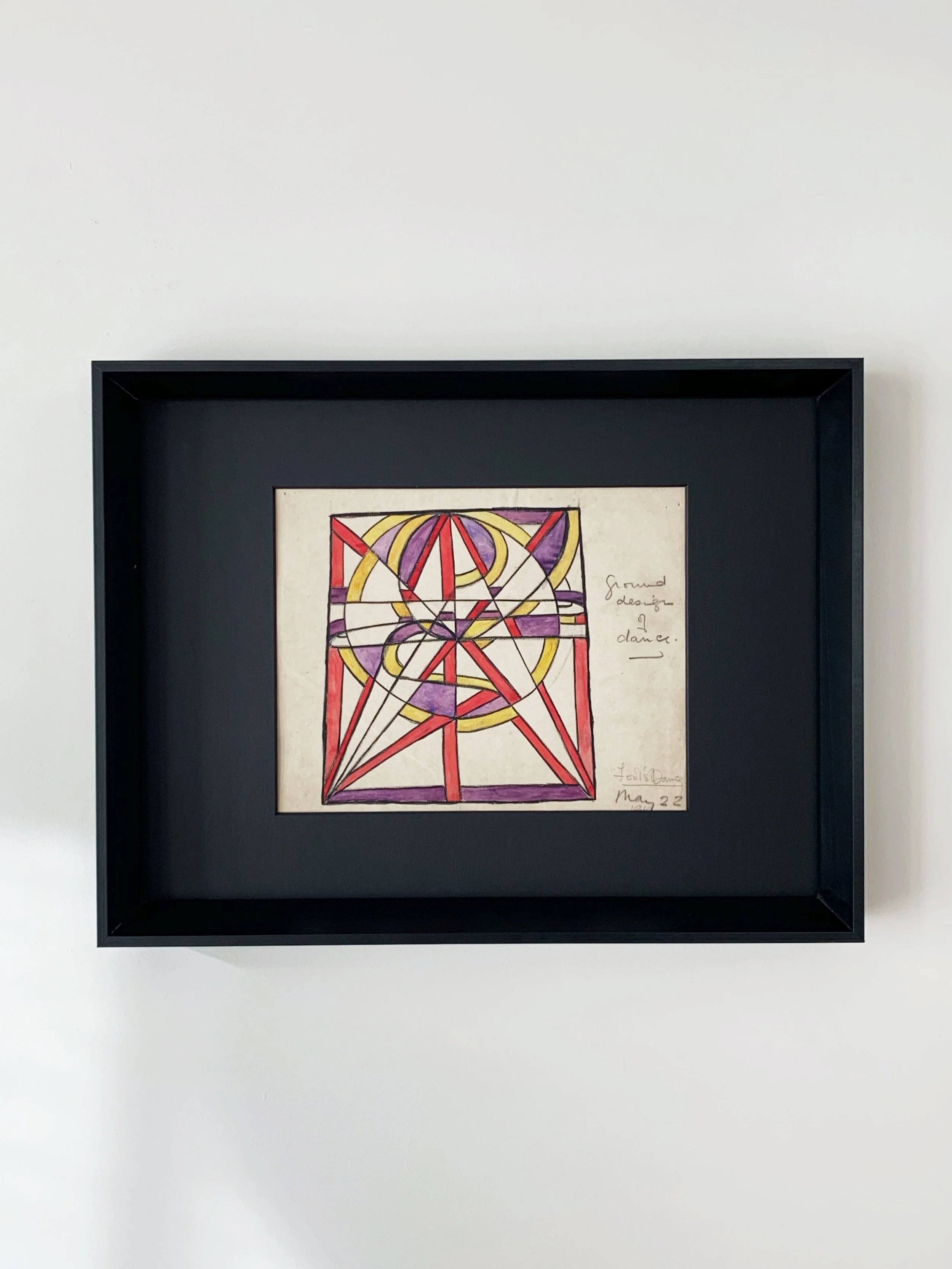
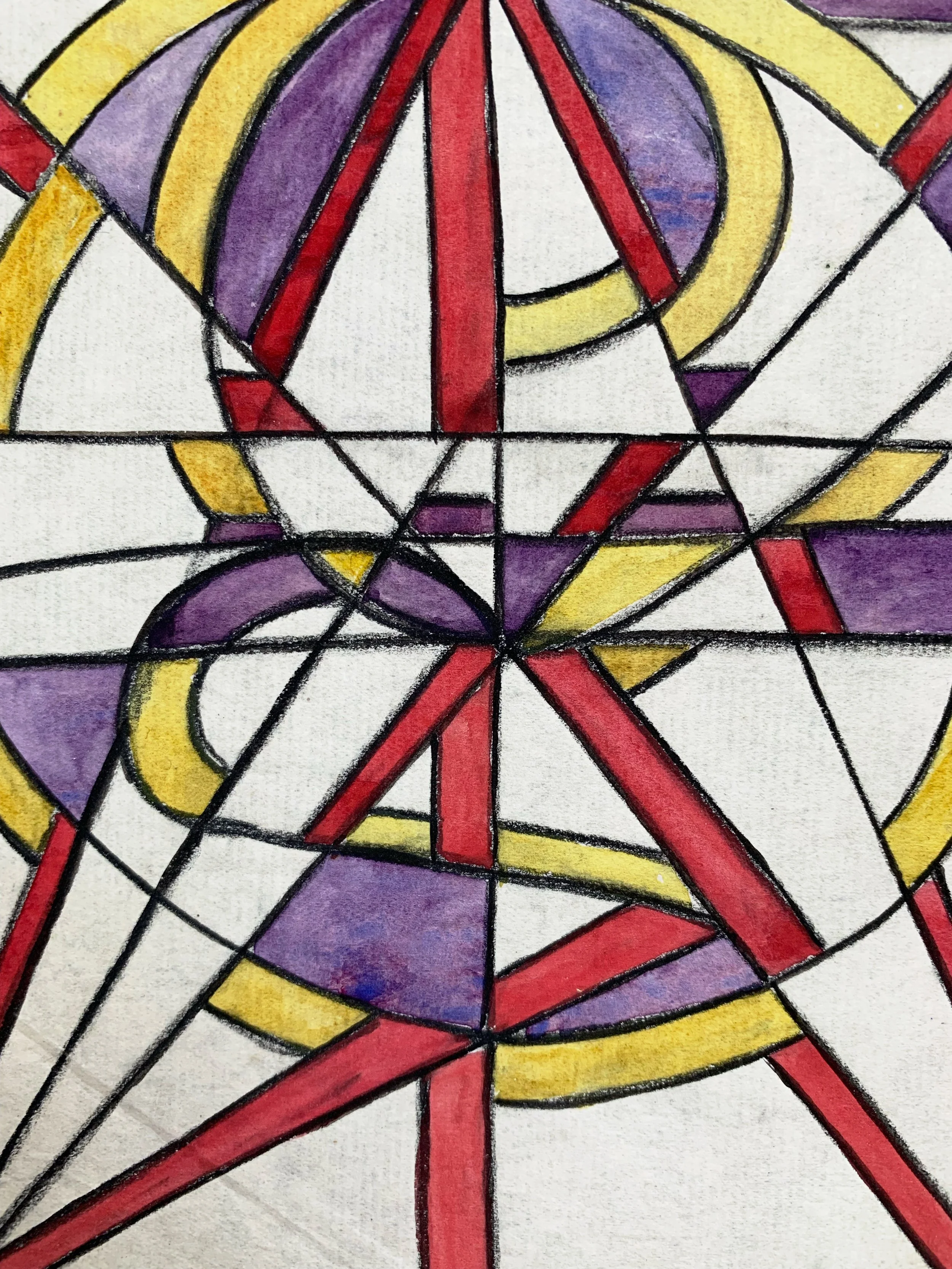
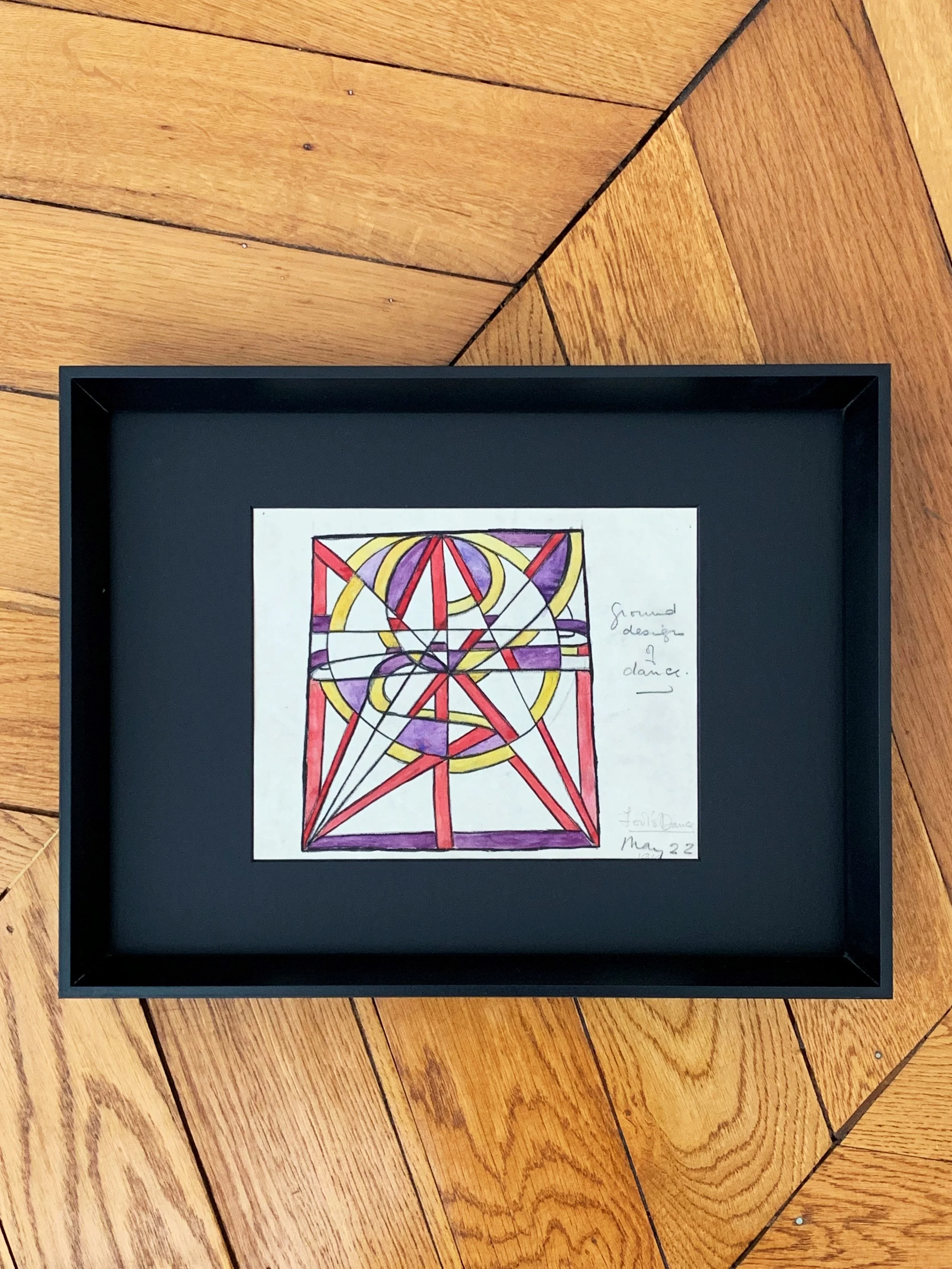
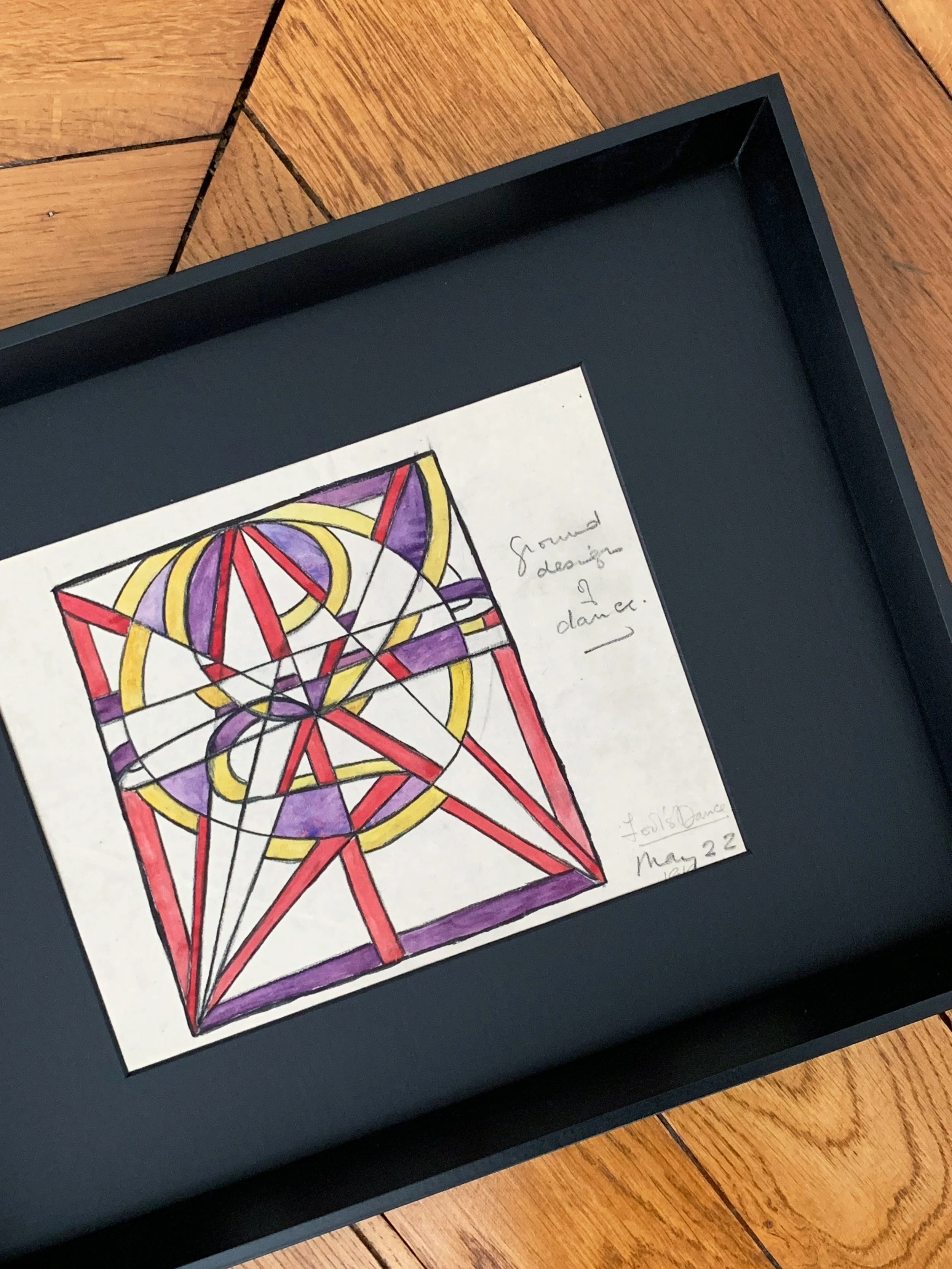
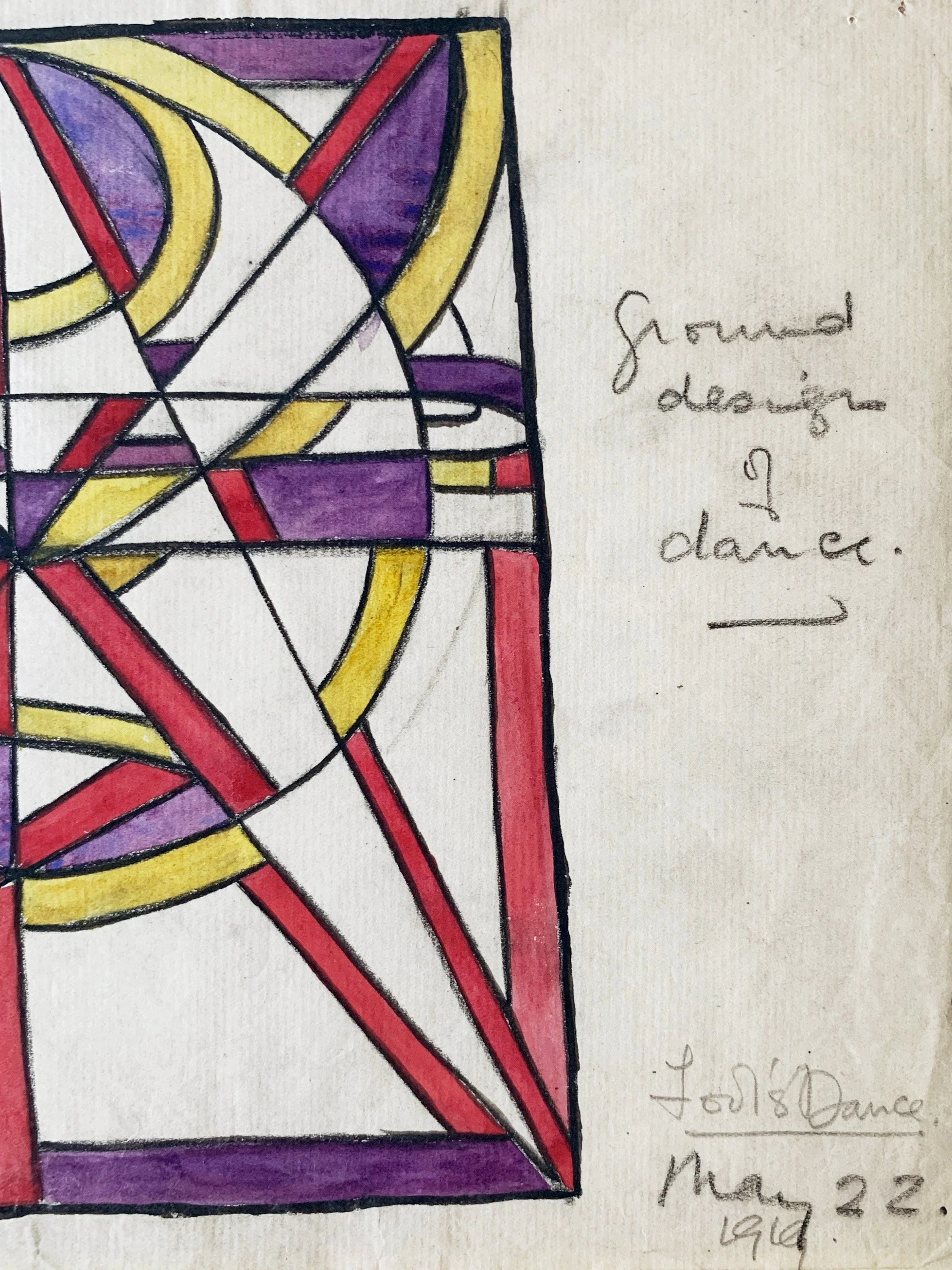
Loïs HUTTON (1893-1972)
Composition – Ground design of dance, 1919
Gouache et fusain sur papier
Daté « may 22 1919 » en bas à droite et annoté « ground design of dance » - « fool’s dance »
Dimensions de l’oeuvre : 20 x 25,5 cm
Dimensions du cadre : 30 x 40 cm
-
Composition, Ground design of dance, 1919
Gouache and charcoal on paper
Dated “May 22 1919” and annoted “Ground design of dance” – “fool’s dance”
22 x 25 inch
D’origine anglo-saxonne, Loïs Hutton est une danseuse d’avant-garde incontournable de l’entre-deux-guerres. En 1918, elle rencontre Margaret Morris (1891-1980) (ill.1), chorégraphe pionnière du mouvement libre, et intègre son école éponyme située dans le quartier de Chelsea à Londres où celle-ci propose une formation artistique complète. Loïs Hutton aborde ainsi tous les domaines qui ont trait au spectacle de danse. Elle s’initie notamment à la scénographie et au design de costumes mais aussi aux arts plastiques grâce au cours dispensé par le peintre écossais John Duncan Fergusson.
Cette rencontre avec Margaret Morris autour de laquelle gravitent de nombreuses personnalités du monde littéraire et artistique, parmi lesquelles Charles Rennie Mackintosh et Ezra Pound, sera déterminante pour Loïs Hutton. En effet, Margaret Morris développe une approche très singulière de la danse qui s’inscrit en rupture avec les structures du ballet classique. Les deux femmes se lient rapidement d’amitié et collaborent à la mise en place de summer schools qui ont lieu dans le sud-est de la France.
Quelques années plus tard, en 1924, Loïs Hutton et son amie Hélène Vanel fondent le Studio Rythme et Couleur (ill.1) à Saint-Paul-de-Vence. Il s’agit d’un studio de danse libre au sein duquel les deux artistes élaborent des théories modernes qu’elles diffusent dans les Cahiers Rythme et Couleur publiés à partir de 1925. Elles conçoivent le corps comme un médium au service d’une composition globale et considèrent ses mouvements comme le dessin d’une ligne dans l’air.
Loïs Hutton et son amie parcourent ensemble les théâtres d’Europe avant de retourner dans le Sud où elles ouvrent leur propre salle de spectacle qui sera fréquentée par de nombreux artistes de l’avant-garde européenne tels que Salvador Dali ou encore Pablo Picasso.
Parallèlement à sa carrière de danseuse, Loïs Hutton produit une œuvre picturale ambitieuse et originale. Ses études à la gouache et ses huiles aux tons vifs empruntent aux coloristes écossais ainsi qu’au fauvisme et au cubisme.
L'œuvre sur papier de 1919 que nous proposons s’inscrit directement en lien avec les réflexions menées par la chorégraphe. Les annotations au crayon “fool’s dance” et “ground design of dance” nous en livrent des clés de lecture. La première annotation (trad. “danse humoristique”) renvoie à un type de danse en solo que l’on retrouve au répertoire du Studio Rythme et Couleur. La seconde annotation (trad. “dessin de la danse au sol”) renvoie quant à elle aux réflexions relatives au mouvement du corps déjà en germe dans l’esprit de Loïs Hutton en 1919 alors qu’elle les partage avec Margaret Morris. Elle les approfondira quelques années plus tard au sein de son Studio.
En effet, les traits noirs formant une combinaison de lignes droites et de lignes courbes retranscrivent le tracé des mouvements du danseur sur une surface plane qu’est le sol.
ill.1 Loïs Hutton, Les Ballets Rythme et Couleur, projet d’affiche, 1926, gouache aquarellée sur papier, collection particulière.
ill.2 Loïs Hutton,Sans titre, 1919, gouache, collection particulière


